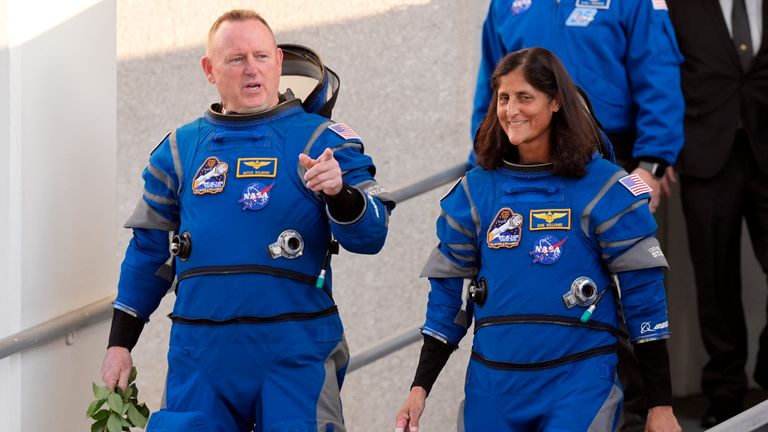Two astronauts are stuck in space because Boeing’s Starliner can’t make the journey back to Earth.
Barry “Butch” Wilmore and Sunita “Suni” Williams blasted off on 5 June in Starliner’s first mission to orbit carrying astronauts.
After docking onto the International Space Station (ISS), the NASA astronauts were supposed to stay in orbit for eight days.
However, the space capsule has had five helium leaks, five dead manoeuvring thrusters and a propellant valve that failed to close completely.
NASA has rescheduled the planned return three times, and now has no date set for it – although internally at the agency, Starliner’s latest targeted return date is 6 July, according to an anonymous source speaking to Reuters news agency.
Such a return date would mean the two astronauts would be in space for a month, instead of just over a week.
The current problems centre on Starliner’s expendable propulsion system, which is needed to back the capsule away from the ISS and position it to dive through Earth’s atmosphere.
Many of Starliner’s thrusters have overheated when fired and the leaks of helium, used to pressurise the thrusters, appear to be connected to how frequently they are used, according to NASA’s commercial crew manager Steve Stich.
So what are Butch and Suni doing up there?
The Starliner commander and pilot – who is the first female test pilot of an orbital spacecraft – spent Tuesday inside making sure the space plumbing works.
The duo replaced the pressure control and pump assembly motor that supports the space station’s main restroom, according to NASA’s ISS blog.
On Friday, they spent the day testing systems within the Starliner spacecraft.
How else can they return to Earth?
Starliner can stay docked at the ISS for up to 45 days, according to Mr Stich.
But if absolutely necessary, it could stay docked for up to 72 days, relying on various backup systems.
If Starliner is deemed incapable of safely returning the astronauts to Earth, one option would be sending them home aboard SpaceX’s Crew Dragon, which ferried four astronauts to the station in March and is able to fit more people in an emergency.
Read more from Sky News:
Huge streamer admits to ‘inappropriate’ messages to minor
Family sues NASA after home is hit by debris from space station
First ever samples collected from ‘far side’ of the moon
That scenario, considered unlikely, would be embarrassing for Boeing.
But NASA and Boeing officials, as well as engineers familiar with the programme, told Reuters nothing about Starliner’s current problems indicates this would be needed.
Why is their mission so important?
The capsule is a critical alternative to SpaceX’s Crew Dragon spacecraft which is currently the only shuttle for US, European, Canadian and Japanese astronauts to and from the ISS.
Back in 2014, NASA commissioned both SpaceX and Boeing to develop a commercial crew capsule but while SpaceX started shuttling astronauts in 2020, Boeing’s spacecraft has been mired in difficulties.
Planned launches last year were scrubbed because of overheating batteries, the discovery that protective tape around wiring was flammable and potentially catastrophic problems with the parachute system used for the capsule’s return to Earth.
Boeing’s losses on the Starliner programme are believed to be around $1.5bn (£1.2bn).







Leave a Reply